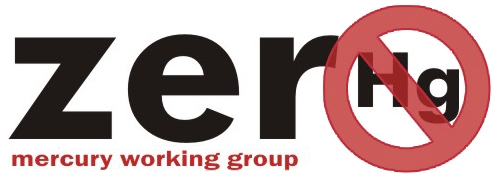Mercury is a necessary element that is added to lamps to form a vapour which produces light when current is passed through it under a vacuum. Lamps such as: compact fluorescent (CFL), long fluorescent (LFL), high-intensity discharge (HID), high-pressure sodium (HPS), metal halide(MH), neon, mercury vapour, use mercury. 5-50 mg mercury is used as mercury vapour, which, when energized, emits ultraviolet energy. This generates visible light when it reacts with the phosphor coating on the inside of the lamp.
Mercury-containing lamps are already widely used, yet sometimes people do not realise that they contain mercury. Millions of these lamps have been flooding the world consumer markets and are used in homes, businesses and institutions, since bans have been adopted on the incandescent lamp in many countries, because it uses more energy.
Mercury can be released during the manufacturing process, especially if hand-dosing of liquid Hg is used. It can also be released when lamps are transported from the factory to the retailer, to the consumer and eventually to disposal. When mercury-containing lamps are installed, stored or disposed, they can break and mercury can be released. During disposal of lamps in dumpsters, rubbish bins, incinerators and landfills, mercury can be released and enter into the atmosphere. Even if lamps get recycled, mercury can evaporate during crushing, mercury recovery, as well as metal smelting. All of these instances need to be addressed and solutions found so that mercury does not get released but instead is removed and recycled carefully.
The “mercury paradox”:
Apart from the mercury which may be released from a mercury-containing energy saving lamp during its lifetime, mercury is a trace element in coal; therefore energy produced via coal combustion causes mercury releases. Hence lower energy consumption – via energy saving lamps – may lead to less mercury emissions via the energy production route. However, mercury releases vary with the percentage of coal and the mercury content of the coal in the fuel mix, the extent of mercury controls on coal combustion flue gases, the assumed lifetime of a CFL, the mercury content of the CFL, the rate of secure collection of waste CFLs, the disposal pathways for CFLs not collected, and other means.
As a result, reductions of mercury releases through the use of CFLs may not be overwhelming, depending on the region and country; the great benefit of using CFLs is energy efficiency. Therefore, to reduce overall mercury use and release, it is imperative to reduce the mercury content in CFLs to an absolute minimum, as well as to maximise the lifetime and lumens per watt of all mercury lamps. It is also crucial to ensure that mercury-containing lamps at the end of their lives are collected separately in order to maximise the recycling of all mercury lamps.
It needs to be added here however, that nowadays the technology of mercury free alternatives to these lamps, Light Emitting Diodes (LEDs) has advanced, these are now commonly available and at competitive prices.
Relevant legislation and NGO policy work
Globally
The Minamata Convention on Mercury, under Article 4 requires that Each Party shall not allow, by taking appropriate measures, the manufacture, import or export of mercury-added:
- Compact fluorescent lamps (CFLs) for general lighting purposes that are ≤ 30 watts with a mercury content exceeding 5 mg per lamp burner
- Linear fluorescent lamps (LFLs) for general lighting purposes:
- Triband phosphor < 60 watts with a mercury content exceeding 5 mg per lamp;
- Halophosphate phosphor ≤ 40 watts with a mercury content exceeding 10 mg per lamp
- High pressure mercury vapour lamps (HPMV) for general lighting purposes
- Mercury in cold cathode fluorescent lamps and external electrode fluorescent lamps (CCFL and EEFL) for electronic displays: (a) short length (≤ 500 mm) with mercury content exceeding 3.5 mg per lamp (b) medium length (> 500 mm and ≤ 1 500 mm) with mercury content exceeding 5 mg per lamp (c) long length (> 1 500 mm) with mercury content exceeding 13 mg per lamp, after 2020, except where the Party has a registered exemption pursuant to Article 6.
In the EU
The European Union has developed and adopted two pieces of legislation regulating the content and disposition of electrical and electronic equipment (EEE); Directive 2012/19/EU on waste electrical and electronic equipment (WEEE), mainly ensures separate collection and recycling of EEE, while Directive 2011/65/EC (RoHS) bans the use of certain hazardous chemicals – including mercury or any components containing mercury – in new equipment marketed after 1 July 2006.
Member States shall ensure that EEE placed on the market, including cables and spare parts for its repair, its reuse, updating of its functionalities or upgrading of its capacity, does not contain mercury (among other substances). No more than 0.1% as the maximum concentration value by weight in homogeneous materials shall be tolerated.
Lighting sources are part of these directives. Until now, due to the lack of widely available energy-efficient alternatives, the EU has specifically permitted continued use of fluorescent lamps with a generally low mercury content, as well as all specialty mercury lamps (more details on this are contained in the RoHS Directive).
This prohibition shall not apply to cables and spare partsfor the repair, the reuse, the updating of functionalities or upgrading of capacity of (among others) monitoring and control instruments placed on the market before 22 July 2014; and industrial monitoring and control instruments placed on the market before 22 July 2017;
The prohibition of the manufacture, export and import of the above lamp categories as listed under the global section, after 31.12.2020, is covered by the Mercury Regulation (EU) 2017/852 which complements a large body of existing EU environmental law on mercury.
NGOs have followed for many years the review of the relevant exemptions and relevant work can be found in relevant position papers and publications since 2008. EEB/ZMWG organised a conference on the issue in 2008 - 'Mercury containing lamps under the spotlight', the report from the conference can be found here.

